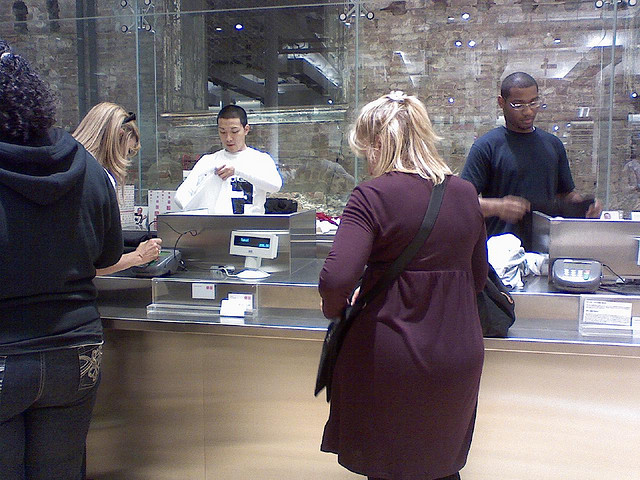A small business needs to take advantage of every bit of technological innovation that it can access in order to compete in today’s marketplace. As location retail (brick and mortar stores) and the world of eCommerce become increasingly intertwined, the humble cash wrap has evolved while at the same time dropping in price so that even a small pop-up at a swap meet or farmer’s market booth can have a state of the art point of sale system.
Welcome to the Cloud
There was a time when the sophisticated cash wrap was about as mobile and versatile as your average boulder. It was at the front of a big department store, staffed by a cashier, and cost thousands of dollars. The back office functions such as inventory and accounting were handled by another set of staff that transferred the data to their own programs and dealt with it accordingly. However, as eCommerce demands made changes to the world of online retail, it only made sense that some of those changes would bleed over into the world of location retail. The biggest change in the past five years had been the mass availability of Cloud technology, offering the small business access to software and services once far out of reach of their bank account. The use of cloud technology by small business has been such a game changer that Inc. magazine forecasts that by 2020 – just six years from now – 80 percent of all small businesses will be using the cloud for their productivity, accounting, commercial, and creative needs.
And the Reason Why?
Because it works. According to the Houston Chronicle, small businesses that invest in better information systems for their operations experience less inventory shrinkage, less loss through accident, and can even pinpoint where and when the losses occur. Accounting and taxation functions are integrated with the POS, so that revenues, taxes, and other finances are always in good, real time order. Tracking stock with an SKU and scanning customers through checkout with barcodes allows real time inventory and stocking levels to be adjusted accordingly. In short, for around $500 plus the cost of an iPad or Android tablet, you can unpack a POS system, set it up in a short amount of time, and then become much more acquainted with the details of your own business than you ever thought possible.
What Equipment Do I Need?
Some systems come with a tablet, and for others you will need to purchase the tablet yourself. The tablet forms the core of the POS system, called the CPU. Just like the CPU in a computer, the tablet allows the parts of the system to function as a cohesive whole. The basic parts you’ll need are:
- Tablet Stand: Holds the tablet and sometimes a stylus for signature transactions, also acts as the “customer pole” display in case you don’t have one.
- Cash Drawer: The most basic element of the POS – where to put the money and receipts. This needs to be really well made in order to hold up to daily use, made of sturdy materials such as steel or high impact plastics.
- Receipt Printer: In many states a receipt must be given to the customer upon completion of the transaction as a matter of consumer protection law. Hand written receipts can be forged, lost, or rendered unreadable, but with a receipt printer, the record is not only on paper, but in your accounting, sales, and inventory records as well. Some models of receipt printers can also double as check machines – able to read, authorize, and endorse your customer’s checks for deposit. This eliminates the need for a separate check scanner and the risk of accepting an NSF check.
- Barcode Scanner and Barcode Printer: The backbone of your inventory control system is among the most critical items you will need to set up your POS system. While creating bar codes and SKU numbers might sound tedious, it’s a step that you can’t afford not to take. Keeping a live inventory helps to stop loss due to theft and human error, but can also help avoid losing sales from running out of stock. Setting restocking levels means that you will never have to issue another raincheck or lose a sale to a competitor.
So Where Do I Find One?
Lots of different places, from your local office supply store to eCommerce platforms like Shopify carry the components you’ll need to set up your own POS system. You can choose from traditional providers like NCR – one of the biggest names in cash registers for decades – or from the Johnny Come Latelys such as Shopkeep and PayPal who have moved from online into location retail. Finding the system to fit your store is a matter of personal taste and the needs of your specific type of business, so consulting with a professional might be the best way for a POS newbie to go.
Image credit: CC by Consumerist Dot Com




